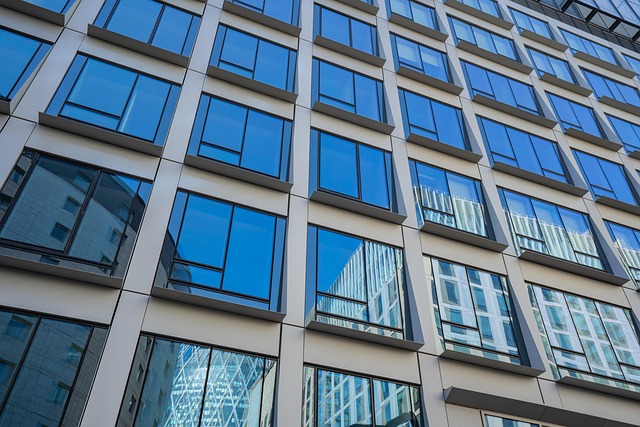Commercial air curtains with motion sensor activation are revolutionizing climate control and energy efficiency in businesses. These advanced door air curtains prevent heated or cooled air loss at entrances, saving energy and promoting indoor comfort. Equipped with sensors that activate on human movement, they reduce operational costs, enhance HVAC efficiency, and serve as an added hygiene barrier. Strategically placed near high-traffic areas, these smart solutions optimize temperature regulation while providing a seamless user experience, making them ideal for retail stores, warehouses, and industrial facilities.
“Commercial air curtains, a cutting-edge solution in energy-efficient environmental control, are transforming the way we manage indoor spaces. These innovative systems, equipped with built-in motion sensors, offer unparalleled convenience and sustainability. This article delves into the world of commercial air curtains, exploring their role in enhancing comfort and reducing energy costs. We’ll unravel the benefits of motion sensor activation, discuss implementation strategies, and provide insights for businesses aiming to optimize their indoor environments.”
- Understanding Commercial Air Curtains: Their Role and Benefits
- The Innovation of Motion Sensor Activation
- Advantages of Built-in Motion Sensors in Commercial Settings
- Implementation and Best Practices for Effective Use
Understanding Commercial Air Curtains: Their Role and Benefits

Commercial air curtains play a pivotal role in enhancing energy efficiency and climate control within various business settings. These innovative entrance air barriers are designed to act as door air curtains, creating an effective barrier at commercial entrances. By integrating advanced motion sensor activation, they ensure optimal HVAC (Heating, Ventilation, and Air Conditioning) efficiency without compromising on comfort.
The primary benefit lies in their ability to prevent the loss of heated or cooled air, which is especially crucial in industrial air barriers like warehouse entrances or retail door systems. This technology promotes climate separation, maintaining a comfortable indoor environment while reducing energy consumption. Commercial air curtains are not just practical; they’re also an eco-friendly choice, contributing to cost savings and improved sustainability for businesses across different sectors.
The Innovation of Motion Sensor Activation

The innovation of Motion Sensor Activation in commercial air curtains represents a significant leap forward in energy-efficient building management. This technology integrates seamlessly with modern commercial entrances, door air curtains, and retail door systems, offering an intelligent solution to climate separation. By automatically activating air curtains upon detection of motion, it eliminates the need for manual operation, reducing energy consumption significantly.
This advancement is particularly beneficial for warehouse entrances and industrial air barriers, where constant movement of goods and personnel can lead to substantial HVAC inefficiency. The motion sensor technology ensures that heated air curtains are deployed only when necessary, contributing to overall energy savings. For commercial spaces, this not only reduces operational costs but also enhances the sustainability profile, making it an attractive option for environmentally conscious businesses.
Advantages of Built-in Motion Sensors in Commercial Settings

Commercial settings require efficient and effective solutions for climate separation at entrances, especially in retail stores, warehouses, and industrial facilities. Built-in motion sensors in commercial air curtains offer a multitude of advantages. One of the primary benefits is their energy-saving technology. By activating the air curtain only when someone enters or leaves a premises, these sensors significantly reduce energy consumption compared to traditional fixed systems. This results in lower operational costs and enhanced HVAC efficiency, especially in large facilities with numerous entrances.
Moreover, motion-activated door air curtains provide an additional layer of comfort and hygiene. They prevent the spread of contaminants by creating a powerful barrier at the entrance, which is particularly important in times of global health concerns. Additionally, they contribute to a better overall user experience, as there’s no need for manual activation, making them ideal for retail door systems and warehouse entrances.
Implementation and Best Practices for Effective Use

Implementing commercial air curtains with built-in motion sensors at entrance points is a strategic move to enhance energy efficiency and climate separation in various settings, from retail stores to warehouse entrances. These smart door air curtains are designed to automatically regulate airflow based on human movement, ensuring optimal HVAC performance.
Best practices involve strategically placing the sensors to capture foot traffic effectively without causing inconvenience. For instance, positioning them near commercial entrances or door systems used frequently can maximize energy savings. Heated air curtains or industrial air barriers with motion sensor activation not only control temperature and humidity but also reduce energy consumption compared to traditional fixed-open settings. This technology is particularly beneficial for retail spaces, where managing indoor climate efficiently contributes to customer comfort and, in turn, enhances shopping experiences.
Commercial air curtains with built-in motion sensor activation represent a significant advancement in energy efficiency and convenience. By understanding their role, leveraging the innovation of motion sensor technology, and implementing best practices, businesses can enjoy enhanced comfort, reduced energy costs, and improved customer experiences. These smart solutions are not just a trend but an essential step towards sustainable and modern commercial spaces. Incorporating commercial air curtains with motion sensors is a game-changer for any establishment seeking to optimize its environment while minimizing resource usage.






